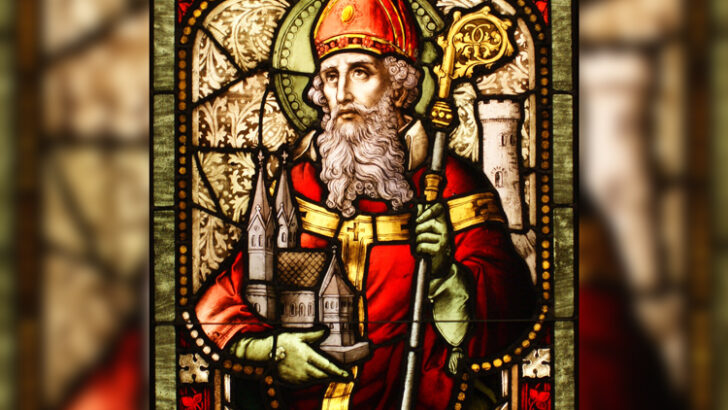Hienrich Zimmer, along with other Germans over the last two centuries such Rudolf Thurneysen, Kuno Meyer and Ludwig Bieler, was one of the scholars who did so much to establish the foundations of modern studies into the Celtic languages of Europe.
Their publications were not only respected in their own day, they still remain essential sources, widely referred to.
In the last years before his death in 1910, Prof. Zimmer devoted much of his time to researching and writing a 575 page biographical study of St Patrick. But this was never published, partly due to his own illnesses, and also to the effect of his own research library going on fire in 1903, during which the manuscript of his great work was greatly damaged.
What remained of his library was purchased from his widow by UCD; but the Patrician manuscript remains in Germany. But now, thanks to an arrangement between the Irish government, the Berlin-Brandenburg Academy of Science and the Humanities, where it is preserved, and Trinity College, the manuscript is to be carefully restored and digitalised.
This will mark an important development in Celtic studies.
Neglected
Zimmer’s long neglected important work has been drawn out of obscurity by a Dublin-based academic, for this work is largely being undertaken by German scholar Dr Immo Warntjes, Ussher Assistant Professor in Early Medieval Irish History at TCD. It is hoped it will be completed in 2025, all going well.
The manuscript will then become widely available online and is certain to be influential. Though unpublished it formed the basis of much of what Zimmer wrote at the time in debates with other scholars.
As it was, two years after the fire, in 1905, Professor J. B. Bury, who had moved from TCD to the University of Cambridge, published his influential life of St Patrick.
Bury was an historian of later Rome – a man who refused even to use the word “Byzantine”, as he considered the Eastern Empire was not part of the true history of Rome. He claimed broadly that his book was “the first scientific biography of Patrick.” This disposed of all those others who had written about the saint in the previous half century and more.
His rigid views gave his book on St Patrick a very “imperial view” — the Roman missionary bringing the gift of civilisation to Ireland. Not all agreed with this denial of the validity of Celtic culture, among them Zimmer, Éoin MacNeill and others since.
Yet it is a view that persists to this day. Recently Dr Flechner of UCD has suggested that Patrick supported himself, at least for a time, by slave trading between Ireland and Britain: for many an unprecedented idea.
Zimmer would have taken a different view. He was also a man of strong opinions on various aspects of Celtic and early Christian Ireland. He published (in German) the Celtic Church in Britain and Ireland in 1899, which appeared in an English version in 1902. This drew on his Patrician research.
His emphasis would have been less on the converter and more on the converted, on the Gaelic speaking natives of Ireland to which his research was so long dedicated. The point of view would be less focused on Patrick as a person of the late Roman world and more on the Irish as a Celtic nation which had remained unconquered by Rome. His research is a sweeping reply to Bury’s dismissive stance regarding both the scholarship of others and the cultural standing of the Irish.
“Zimmer’s biography of St Patrick should be considered the foundation document of modern scientific research on Ireland’s national saint,” Prof. Warntjes told the Irish Catholic last week. “Restoring the manuscript would make this pioneering biography of Patrick available to the public for our time.”
Zimmer’s own biography remains to be written, though just over 100 letters are available through the same institution that houses the St Patrick manuscript.
These could also be made available as well, forming perhaps the nucleus of such a book.
When the present restoration work is finished, and the manuscript made available to modern readers of all kinds, we can expect it to give rise to both sharp controversy and to fertile responses among scholars in Ireland and Germany.
It seems that an exciting era of developments in Patrician scholarship may well be opening.


 Peter Costello
Peter Costello St Patrick
St Patrick 